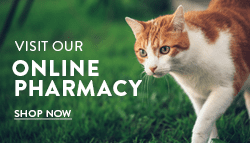Dentistry
Pets Need Dental Care Too
Dental disease is one of the most common problems that we see in dogs and cats. In fact, 80 percent of dogs and 70 percent of cats over three years of age suffer from some form of dental disease. Dental issues and dental related diseases can be prevented by visiting our veterinarians regularly for dental examinations and cleanings. We take a comprehensive approach to dental care including dental health assessment, prevention, and treatment.
Health concerns:
Bad breath is nothing to ignore. Plaque, tartar, periodontal disease, and infected teeth serve as a source of inflammation and infection for the rest of the body, including potential damage to your pet’s heart, kidneys, and liver.
Dental cleaning:
Dental cleanings in pets are very similar to human dental cleanings, except that the pet is anesthetized to properly and safely examine and clean the teeth. Full mouth radiographs are performed to allow full evaluation of your pet’s oral health both above and below the gumline. Our veterinarians perform a thorough oral exam and check for signs of disease like gum loss, root exposure, or pockets around the root.
Extractions:
Sometimes, the periodontal disease has become so advanced that dental extractions become necessary. Minor extractions may be performed at the time of your pets dental cleaning if it is deemed necessary and safe by your pets veterinarian. When major extractions are needed, they may be scheduled at a later date as your pets overall health and safety is our top priority.
Preventative care:
There is a wide variety of things that can be done in between teeth cleanings to help maintain good oral health. We recommend brushing the teeth with a pet enzymatic toothpaste at least twice weekly. (Please do not use human toothpaste!) Dental chews, such as Oravet chews or Greenies, can also be implemented. For pets that are resistant to brushing, or for added care, there are pet-friendly dental rinses and water additives available. Other chewing devices or toys should be used cautiously depending on your pets individual chewing habits. Chew toys should be large enough that the pet cannot break it easily into chunks and/or swallow large pieces; they should be gnawed slowly over time. We do NOT recommend rawhides for any pet as these can pose a choking or blockage hazard.









